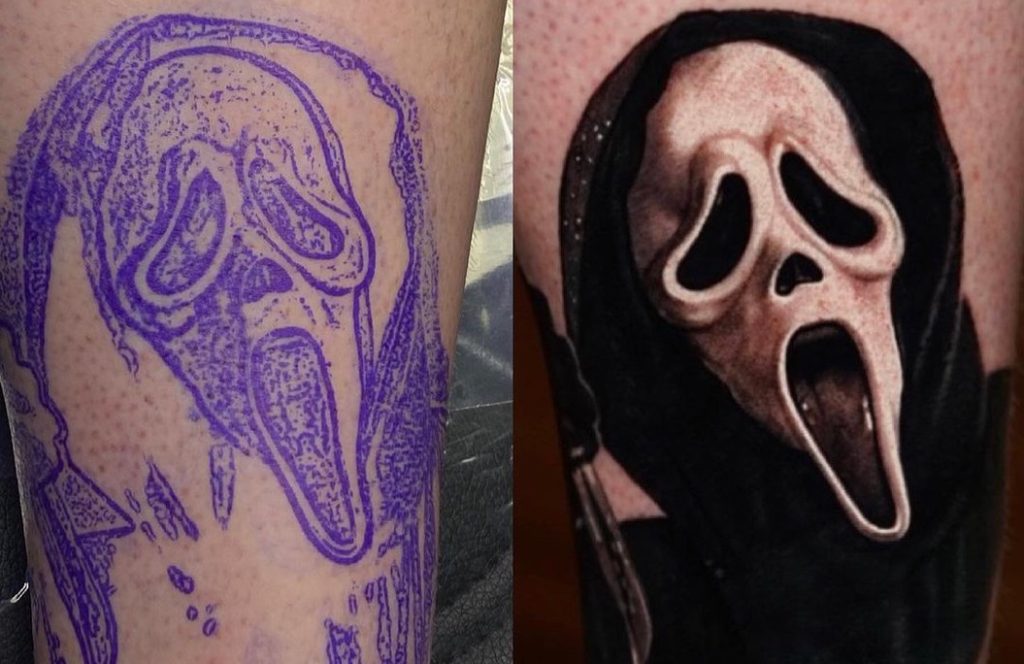

In short, a tattoo stencil is used to transfer the design from the regular paper to the body. How to make a tattoo stencil?Creating durable and high-quality tattoo stencils is crucial for every tattoo artist. These stencils serve as essential guides throughout the tattooing process. Learn the importance of crafting a reliable tattoo stencil that withstands the entire tattooing procedure. Mastering this skill is vital for ensuring successful and lasting tattoos.
Choosing a tattoo stencil becomes an important tool for reaching an agreement between artist and customer. It not only facilitates the creation of an optimal design but also allows experimentation with various placements on the body to determine the most suitable location.
For beginners, using a tattoo stencil boosts confidence, while experienced tattoo artists benefit from it in seamlessly executing the most intricate designs.

Stencil tattoos provide a tremendous advantage because they are not permanent. This flexibility allows the tattoo artist to apply them to your body repeatedly if required. If you do not like the chosen design or the location of placement on your body then you can easily clean the stencil. However, once the needle starts printing the design, it becomes permanent, and any modification becomes impossible from that point on. The non-permanent nature of a tattoo stencil provides an excellent opportunity for customization and adjustment before deciding for a permanent design.
To craft a tattoo stencil, you will need the following materials:
Those items are crucial for the stencil-making process, ensuring a precise and high-quality outcome for your tattoo design.
Here is an outline of how a tattoo stencil is made, hands-on practice with guidance from senior tattoo artists or videos from the internet is highly recommended to facilitate the absorption of this knowledge.
1. Consider drawing designs on plain paper and make sure you are happy with the results. If you are drawing the design yourself, use thick lines to ensure clarity through the imprint or wax paper. If you are using a ready-made design or printed image, you can skip this step as they usually already have clear and thick lines.
2. Gather your materials. Once your design is ready, place the imprint paper or wax paper on it. To prevent accidental movement, secure it with tape on a stable surface. This will help you transfer the drawing design with precision.
3. Transfer the design onto the tracing paper. Carefully trace your design on the tracing paper. Then remove the tape, be careful when you do it as the tape can damage the tracing paper. Now turn over the tracing and put the new piece of the tracing paper above. Once more tape the papers. Trace the design once more now with the help of stencil fluid and an ink pen.
4. Prepare the skin. Shave the area where you want to place the design, then clean and dry the skin with antibacterial soap. Apply deodorant stick to the area to help the tracing paper stick better.
5. Apply the stencil. Place the stencil on the skin with the liquid side down. Pat gently and leave for a few minutes. Avoid rubbing the stencil to prevent damaging the design.
Tattoo stencils serve as a tool to transfer designs from plain paper to the body. They are temporary, lasting only until the tattoo artist begins the dyeing process. Creating a tattoo stencil with trace paper eliminates the need for specialized equipment such as thermographic transfer shapers used with tattoo transfer paper.
To create a tattoo stencil, gather materials such as tracing paper, stencil fluid, fine-tipped ink pen, masking tape, antibacterial soap, razor and deodorant stick. The most time-consuming part of the process involves designing and transferring it to the imprint paper. Alternatively, if you don’t want to draw the design by hand, you can use a tattoo stencil app.